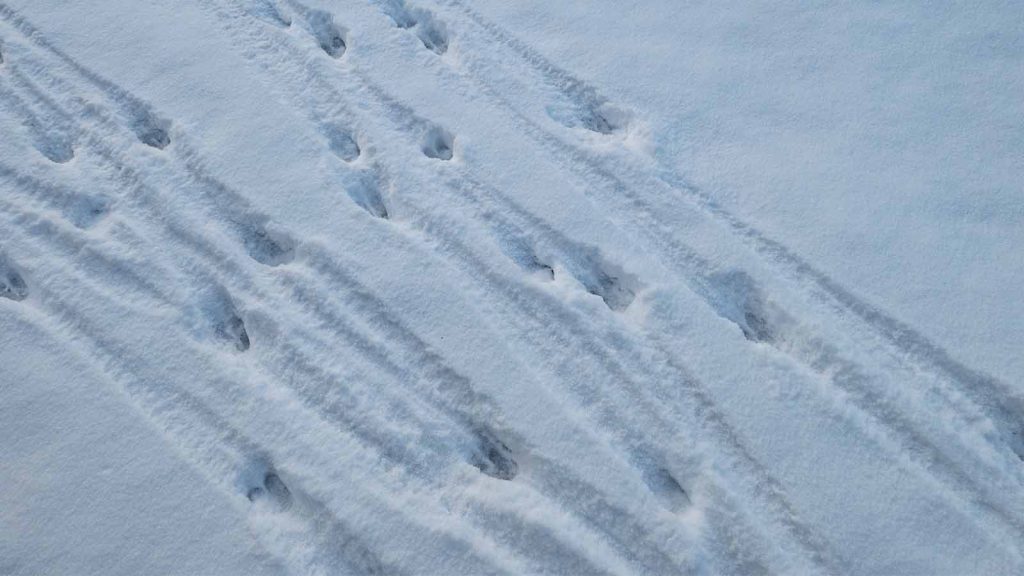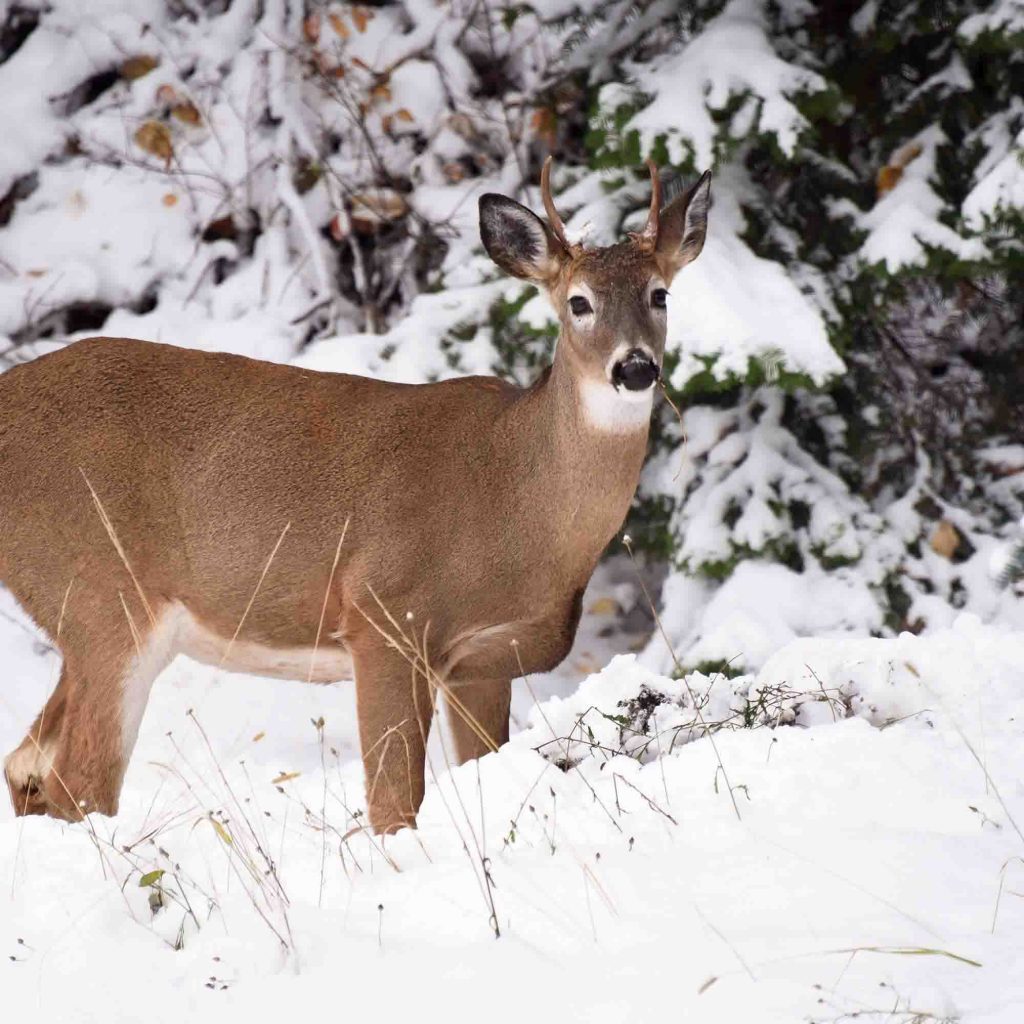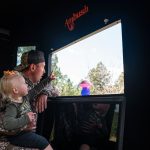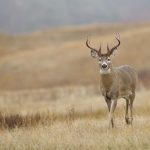Tips for Tracking Deer Before and After Snow
Bows, rifles, and buckshot—when it comes to deer hunting, there are plenty of options for the deer-obsessed outdoorsman. But regardless of your chosen weapon, tracking deer is essential for a successful hunt. Not only do you have to find them, but if you’re blessed with a shot opportunity, you’re required to track a blood trail.
Sometimes blood trailing and tracking after the shot is one of the toughest jobs of the hunt. With the right techniques, you can minimize lost time and make the most of your outing. In this blog post, we’ll give you some tips on how to track deer before and after a snowfall. Let’s begin!

Scouting for Deer Tracks and Signs Without Snow
Deer tracking is an art form practiced for centuries. An art where specific know-how can mean the difference between a successful hunt and an unsuccessful one. Generally speaking, tracking deer involves studying the environment for signs of their recent activity, including tracks, droppings, or destructed foliage.
Maps & Location
But before you get out looking for deer, you first need a general idea of where they are. The first thing you want to do is get the lay of the land before you start putting your boots to the ground. You don’t want to spend time and energy in the wrong places. These days, high-level internet scouting is a great way to narrow down potential hunting areas.
Google Earth, Google Maps, and apps like onXmaps are powerful tools for deer scouting. By taking advantage of satellite images, aerial photographs, and modern GIS tools, deer hunters identify sites that potentially hold deer.
Habitat
Deer are edge species, meaning they like the interface between habitat types such as clear-cuts and forest stands. Google Earth can help you find good deer hunting areas by locating clear-cuts and other transition zones. Clear-cuts create an ideal habitat for many kinds of wildlife, including deer.
Transition zones are areas where one habitat type transitions into another. An example is an area that sits between a clear-cut and existing forested land, often containing young trees as well as clearings that more mature animals may prefer. Other examples are forest to marsh and marsh to grassland habitats. Deer love this mix of habitat types.
Look for these key spots, along with natural funnels and likely bedding areas, to get a better idea of where deer might be concentrated. This will help you target the best possible areas when planning your hunt. Hunters play a vital role in preserving the habitat of deer.
Tracking
Once you’ve identified some key hunting areas, you’re ready to get in there and get eyes on these places. When you’re finally out in the field, take care to move around stealthily and take cues from your surroundings, you can often get a sense of the direction a deer herd moves through the area.
You want to track these deer. But you also don’t want to bump or otherwise disturb them before the hunt. Deer pick up on the fact they’re being pursued pretty quickly. And big, mature deer are especially wary. As the saying goes, he didn’t get big by being dumb.
To begin tracking, first look for fresh tracks in soft soil or mud on the ground—differentiating them from other animals, such as raccoons or elk, which leave similar markings in the dirt. Also, scan around for dried mud with hoof prints embedded therein. Often this type of sign indicates where a deer stopped to feed before heading off further into its home range.
Be sure to pay attention to snapped twigs lying nearby. These can indicate a “rubbing tree” used by bucks during the rutting season to advertise their location to any potential mates in the area.
You can also look for other clues such as beds, scrapes, rubs, trails of broken foliage, or deer droppings. The more of these clues you find together in an area, the more likely it’s a consistently visited spot.
With experience and practice, tracking deer becomes easier. It’ll just “click,” and soon you’ll see what was once invisible. By learning how to identify signs and use tracking to scout effectively, you’ll become a master.

Tracking Deer After It Snows
Snow Tracks
When the snow starts flying, it turns the landscape into a blank slate. That is great for locating deer! After the snow falls, look for the areas where snow has been disturbed. This will often indicate where the deer have recently been. Pay close attention to any trails in the snow created by deer walking through. Also, keep an eye out for depressions in the snow where deer have been lying down to rest or forage.
Snow can also reveal the tracks of deer in their wake. This helps you gauge the direction and speed in which they are traveling. As snow melts, look for patches of snow cleared away by deer hooves. Then, examine them closely to decipher if a herd is heading north, south, or east. Take note of any snow-covered branches or broken-off saplings. This type of sign often indicates the presence of a large buck.
Deer Behavior When it Snows
When snow falls, big bucks will often seek out sheltered areas such as thickets to keep warm. To track a big buck after a snowfall, scan these areas for tracks and other signs indicating their presence. Also, look for large footprints leading away from the area—this could indicate that a big buck has recently moved through there. Pay close attention to trees with scrapes or rubs on them—this is a sure sign of a big buck in the area and can give you an indication of where it may have gone.
Deep Snow
If you run into snow that is too deep, look for tracks in strategic areas such as clearings, ridges, and stream banks. These places tend to stay snow-free longer and offer a better chance of spotting fresh signs from deer passing through. Also, take into consideration that snow can reveal clues like droppings and tracks that were previously invisible. Snow can therefore be an invaluable asset when tracking deer.
Other Tips
By learning and mastering the art of tracking deer before and after a snowfall, you can increase your chances of success when it comes to finding deer. Being able to identify tracks and other signs left by deer can help you locate them quickly and accurately. So, keep a sharp eye out for tracks in the dirt, mud, and snow-covered trails that lead away from clearings or ridges. Pay attention to snapped saplings, broken branches, and hoof prints embedded in the snow. These are all sure signs that deer are using the area.
Once you collect good intel, you can throw some cameras up in your areas. These round out the tracking/scouting mission and further dial-in deer movement.
Utilizing these techniques and becoming aware of your environment while searching for deer before and after it snows, you can identify their sign and track them effectively. With practice, you will develop a sixth sense for finding deer and possibly be rewarded with the big buck of your dreams. Good luck on your next hunt!






